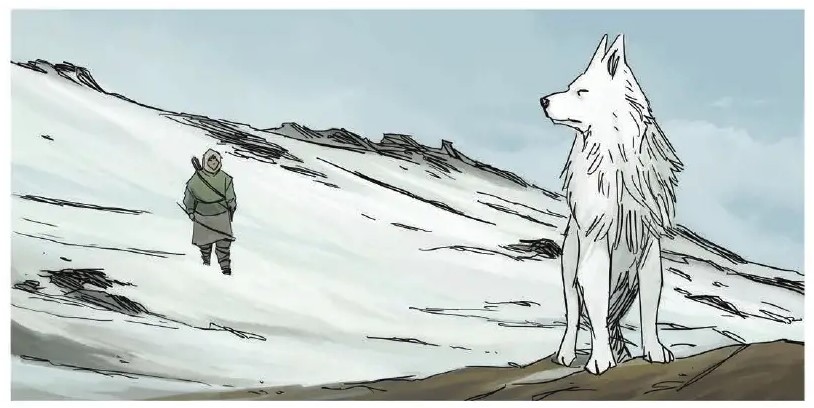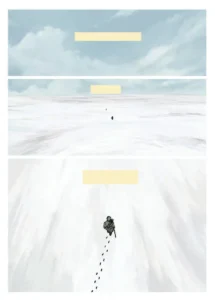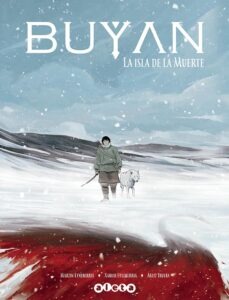The world of the spiritual is constantly intertwined with everything human, so much so that there seems to be little room left for anything else. This was especially relevant in the ancient world where all explanations about reality and the real were linked to it. This spirituality is not something that goes hand in hand with religiosity or belief in a certain deity. It often happens, but not always. Well, spirituality is also closely linked to a well-known metaphor on which the Mexican philosopher Mauricio Beuchot spoke extensively. We are referring to the metaphor of the journey, the path, the transit.
Buyan. The island of death (Aleta) is a story of a journey, a path of understanding, recognition and inner struggle. In all of this, as was usual in 1241 -the time in which the narration takes place-, violence and fighting were also likely to be found in every village. These perspectives were based on a somewhat fanatical and biased view of the world. Therefore, the capacity for openness and freedom that this path also offers was ignored. Therefore, the work we are talking about is a beautiful game of violence, spirituality and love.
This game of narrative replies and counter-replies, inserted in this classic triangle, is based on the expansion of the Mongol empire towards Europe. In this historical context, blood writes history, but there is always the possibility of alternatives. These new possibilities are based on a calm and observant vision of the world. A simple hunter or an observer of the world? I do not know. What is clear to me is that human thought, for example, the Greek, was largely based on the observation of reality.
 Martin Etxeberria Y Xavier Etxeberria are responsible for the script of this classic and current work. This reworking of the narrative of human transformation along the way. A path of internal growth (similar to pilgrimages) where reality is not what it seems. This contrasts with the idea that we have talked about before. If the main character is an observer (possible philosopher), how is it possible that he bets on a misleading narrative? The answer would be on the road itself. At every step the truth is stripped bare and we will understand, page by page, the ins and outs of that reality where spirituality is intertwined in the veins that we have before us.
Martin Etxeberria Y Xavier Etxeberria are responsible for the script of this classic and current work. This reworking of the narrative of human transformation along the way. A path of internal growth (similar to pilgrimages) where reality is not what it seems. This contrasts with the idea that we have talked about before. If the main character is an observer (possible philosopher), how is it possible that he bets on a misleading narrative? The answer would be on the road itself. At every step the truth is stripped bare and we will understand, page by page, the ins and outs of that reality where spirituality is intertwined in the veins that we have before us.
The trip will present disconcerting elements for the reader. At first, it will not be well understood who the main characters are. In some cases, in addition, we will not be clear if we have been deceived. Even at the end of the play we will continue to be baffled. This could be disappointing for some readers, but it opens up a multitude of interpretive possibilities of what we are observing. After all, the protagonist wants to travel to the island of death and I wonder, don’t we all want to travel there? The question would be whether this island is another metaphor or not.

The visual narration is signed by Aritz Trueba who manages to contribute a poetic and, of course, also spiritual character to a good part of the work. This element plays an essential role, since the written narration relies heavily on the visual one. Without it, it could seem that the written narrative is fragmented and loses that power that we have talked about. The stroke has a classic air that suits the work very well and is accompanied by an elegant and measured color. It is noted that the use of the color palette has been measured and achieves potential narrative elements. On the other hand, the drawing has a certain static character that contrasts in a very marked way with the dynamism of the story. A new counterpoint that is shocking and that constantly drives us. This does not mean that the work is cold or that it is not exciting. Quite the contrary. In my opinion, this choice of a more static narration allows to enhance the poetic and spiritual character of the work.
In short, a really beautiful work, with a precious spirit that moves away from the commercial perspective and becomes, without a doubt, an essential work for the comic reader looking for works with these characteristics. Once again Aleta has hit the center of the target.
By Juan R. Coca

